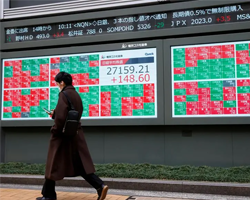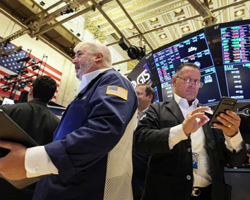Dow's Modest Gain Amid Yield Surge, Bank Earnings, and Global Economic Data | Daily Market Analysis

Key events:
- UK - CPI (YoY) (Sep)
- Eurozone - CPI (YoY) (Sep)
- Eurozone - ECB President Lagarde Speaks
- USA - Building Permits (Sep)
- USA - Housing Starts (Sep)
- USA - Crude Oil Inventories
- USA - Fed Waller Speaks
- USA - FOMC Member Williams Speaks
- USA - FOMC Member Bowman Speaks
- USA - FOMC Member Harker Speaks
On Tuesday, the Dow Jones Industrial Average managed to eke out a modest gain, albeit with its upward momentum dampened by a surge in Treasury yields. The catalyst for this rise in yields was stronger retail sales data, which underscored the enduring vigor of the economy. However, it also ignited concerns about the possibility of another Federal Reserve rate hike before the year's end.
Specifically, the Dow inched up by 0.04%, equivalent to a 13-point increase. In contrast, the Nasdaq experienced a 0.3% decline, and the S&P 500 saw a marginal 0.01% dip.
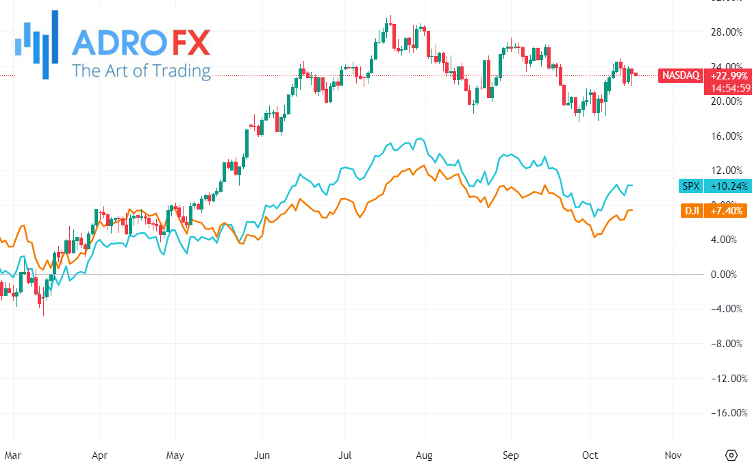
Treasury yields extended their ascent, with the 2-year treasury yield reaching a 17-year peak. This movement was driven by the better-than-expected retail sales data, suggesting that the Federal Reserve may still have additional policy adjustments to make.
Bank of America Corp (NYSE: BAC) reported quarterly results that exceeded Wall Street's expectations, propelling its stock up by more than 2%. However, Goldman Sachs' (NYSE: GS) Q3 earnings fell short of estimates due to losses incurred by its real estate investments and Greensky fintech business. Goldman Sachs recorded a $358 million write-down on its real estate investment, which has been affected by the sharp rise in interest rates.
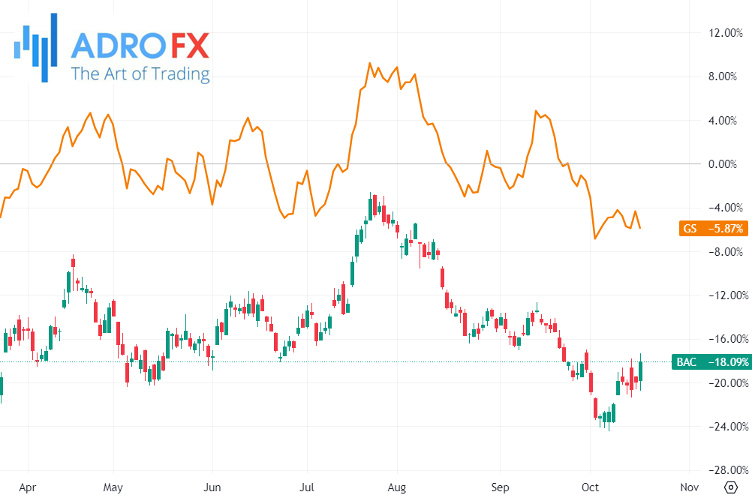
Despite Johnson & Johnson (NYSE: JNJ) reporting quarterly results that surpassed both revenue and earnings expectations, the pharmaceutical company's stock closed about 1% lower. Johnson & Johnson revised its annual guidance upward following these strong results, now projecting annual sales between $83.6 billion and $84 billion and adjusted earnings per share between $10.07 and $10.13.
European markets faced a challenging day, with only marginal gains achieved. The FTSE 100 outperformed its counterparts, primarily due to the strength of the healthcare sector.
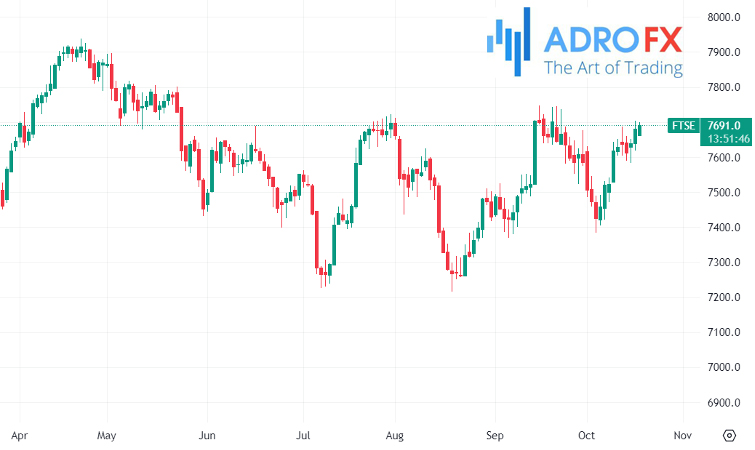
In international affairs, diplomatic efforts persisted to prevent an escalation of an ongoing crisis. President Biden's impending visit to Israel later in the week reduced the likelihood of an immediate incursion into Gaza by Israel. However, an overnight bombing at a Gaza hospital complicated matters, leading to disputes about responsibility and causing a notable increase in oil prices.
The retail sales data for the previous month exhibited a robust increase of 0.7%, significantly surpassing economists' forecasts, which had projected a rise of 0.3%. Notably, the retail sales control group, which wields a substantial impact on US GDP, rose by 0.6%, far exceeding expectations for a 0.1% increase.
These solid retail sales initially lifted the Dollar Index (USD/DXY) to 106.53, only to retreat slightly and conclude at 106.20.

Against the Japanese Yen, the US dollar continued its gradual ascent towards the 150.00 level, reaching 149.75 from 149.55. The Euro (EUR/USD) saw a modest rise, edging up to 1.0575 from 1.0535.
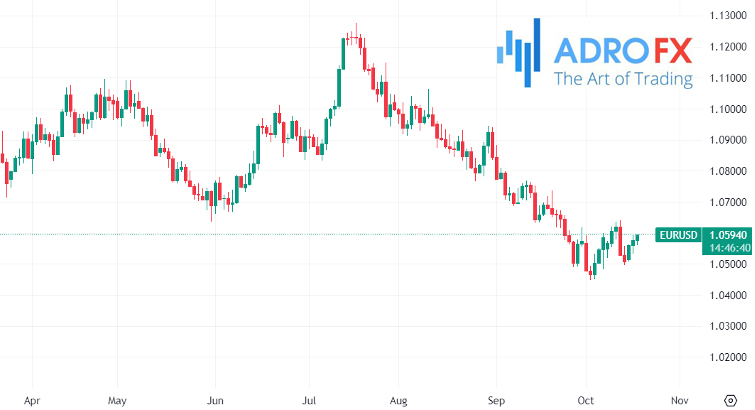
Furthermore, hawkish minutes from the Reserve Bank of Australia (RBA) provided a boost to the Australian Dollar (AUD/USD), resulting in a closing rate of 0.6365, compared to the previous rate of 0.6297. The RBA's stance is seen as leaving the door open for a potential rate hike in November, with the focus now shifting to the third-quarter inflation report.
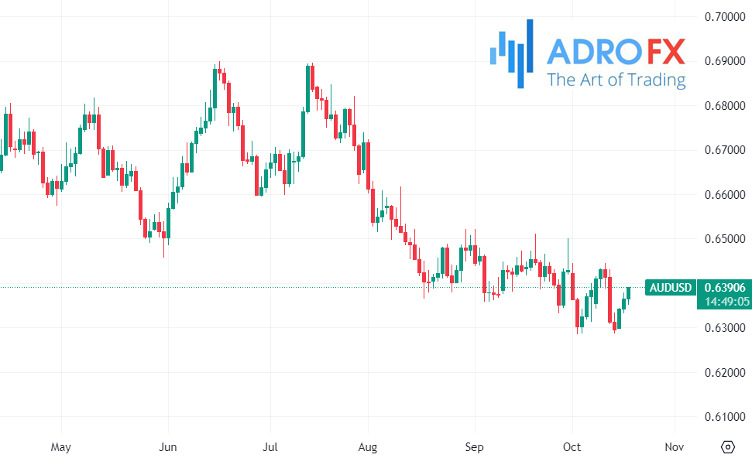
Today, the focus shifts to Asian markets with the release of key economic data from China. The world's second-largest economy is expected to reveal its annual Industrial Production, which is forecasted to ease to 4.3% from the previous 4.5%.
In Europe, the United Kingdom takes the lead with its UK September Inflation Rate, which is anticipated to register a year-on-year figure of 6.6%, a slight decrease from the previous 6.7%. Additionally, the monthly forecast suggests an increase from 0.1% to 0.5%.
The Eurozone contributes to the economic landscape with the release of the September Final Inflation Rate and the Eurozone September Final Core Inflation Rate.
Finally, the United States rounds up today's data releases with its September Housing Starts and US Preliminary September Building Permits. Federal Reserve Heads Waller, Williams, Harker, and Cook are scheduled to speak at various events, adding an extra layer of significance to the day's financial news.
